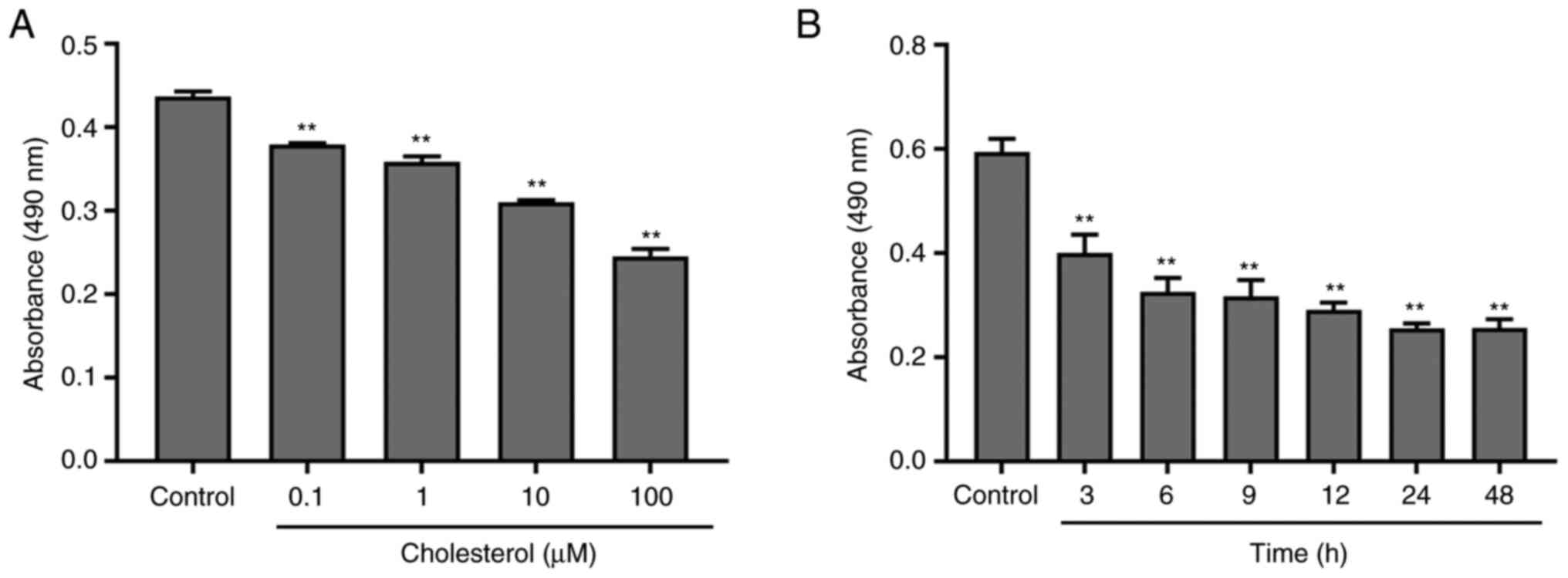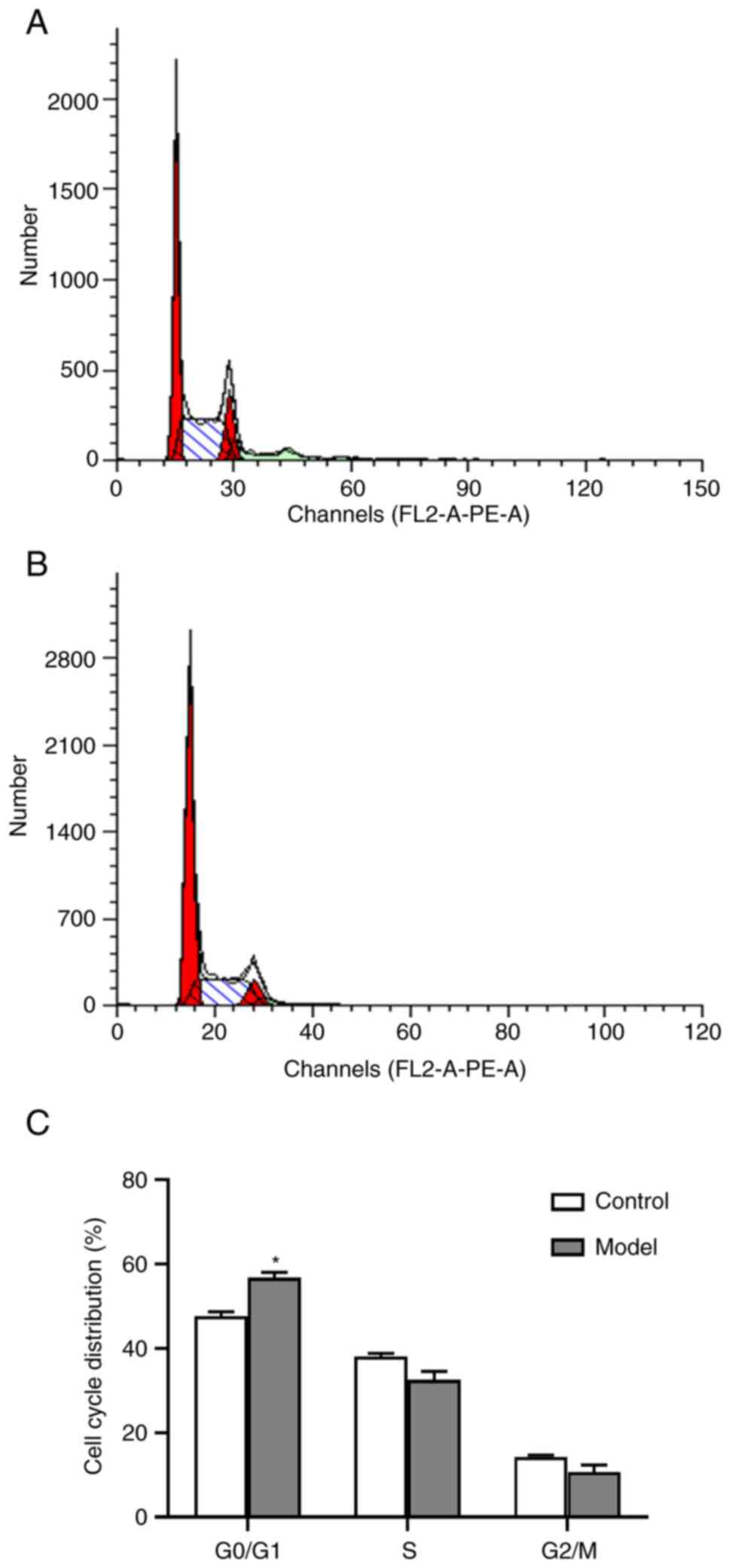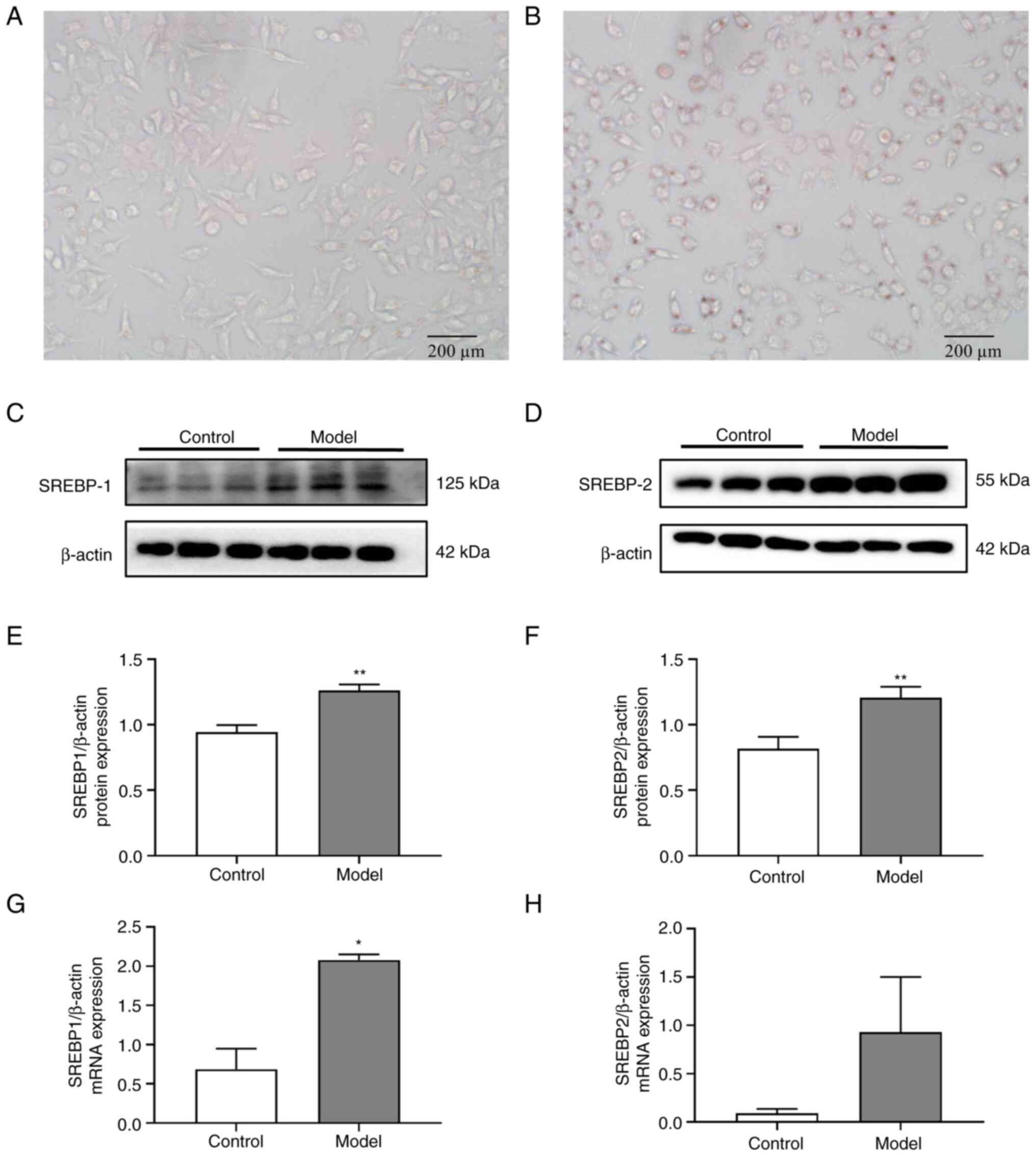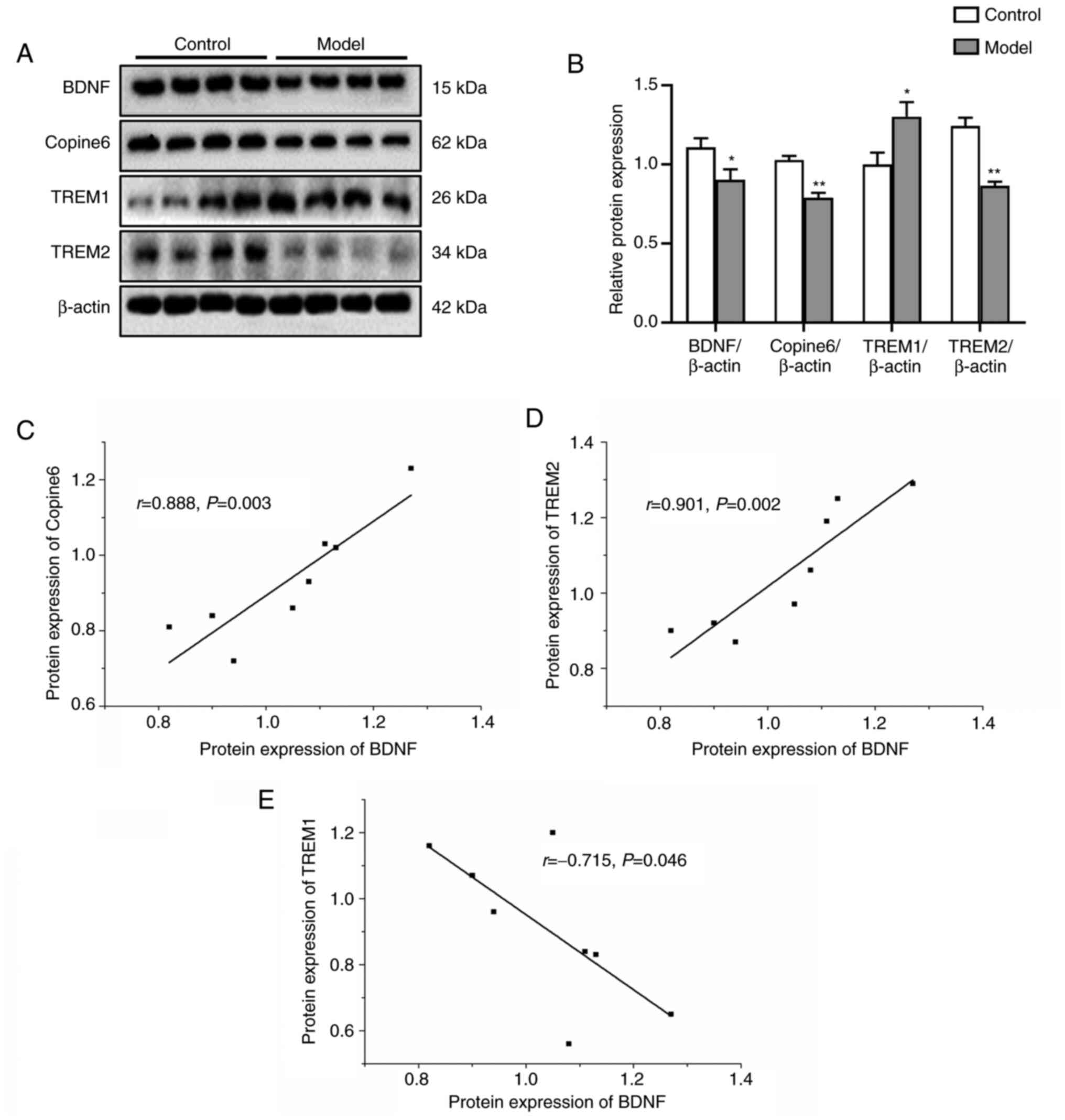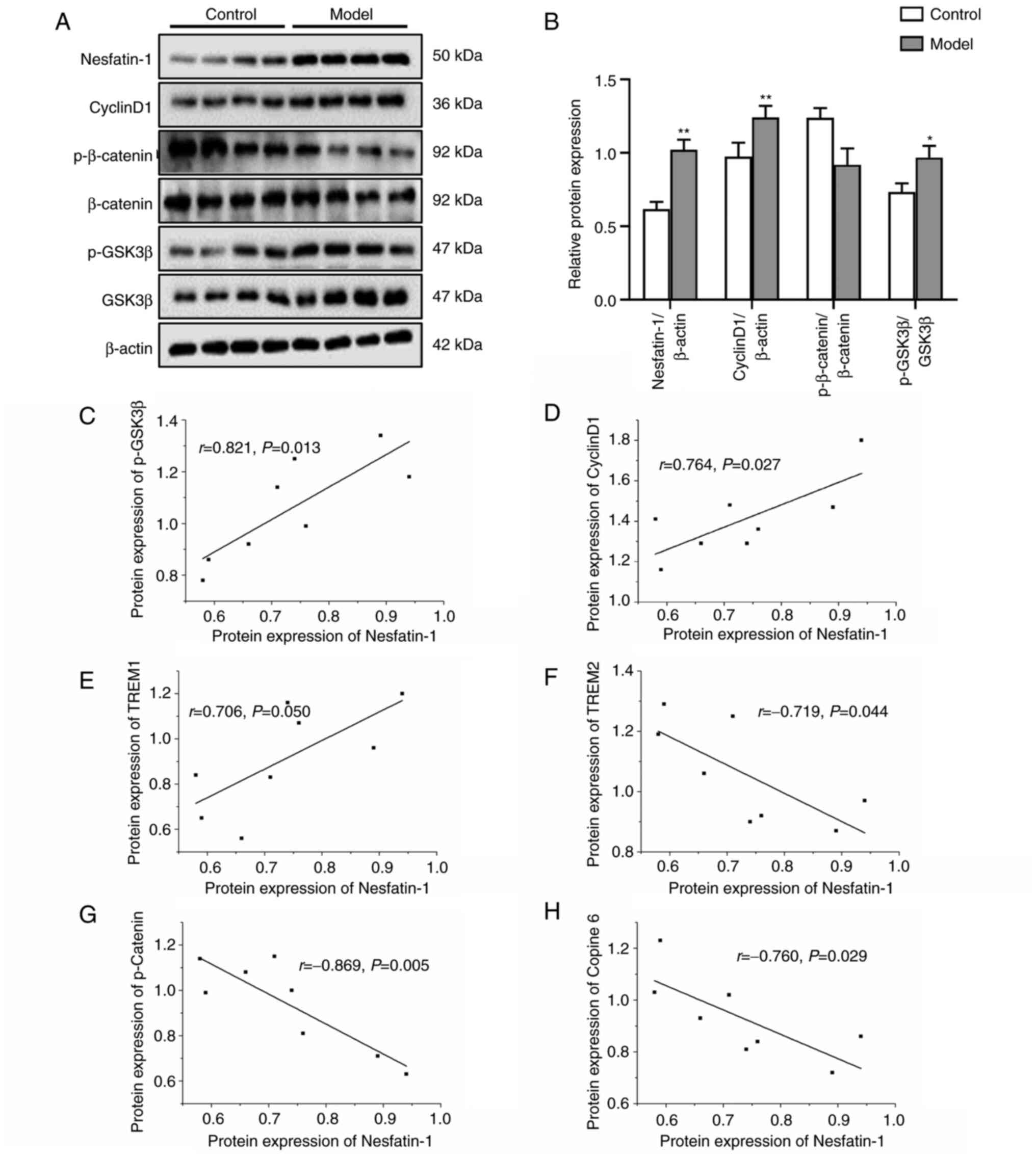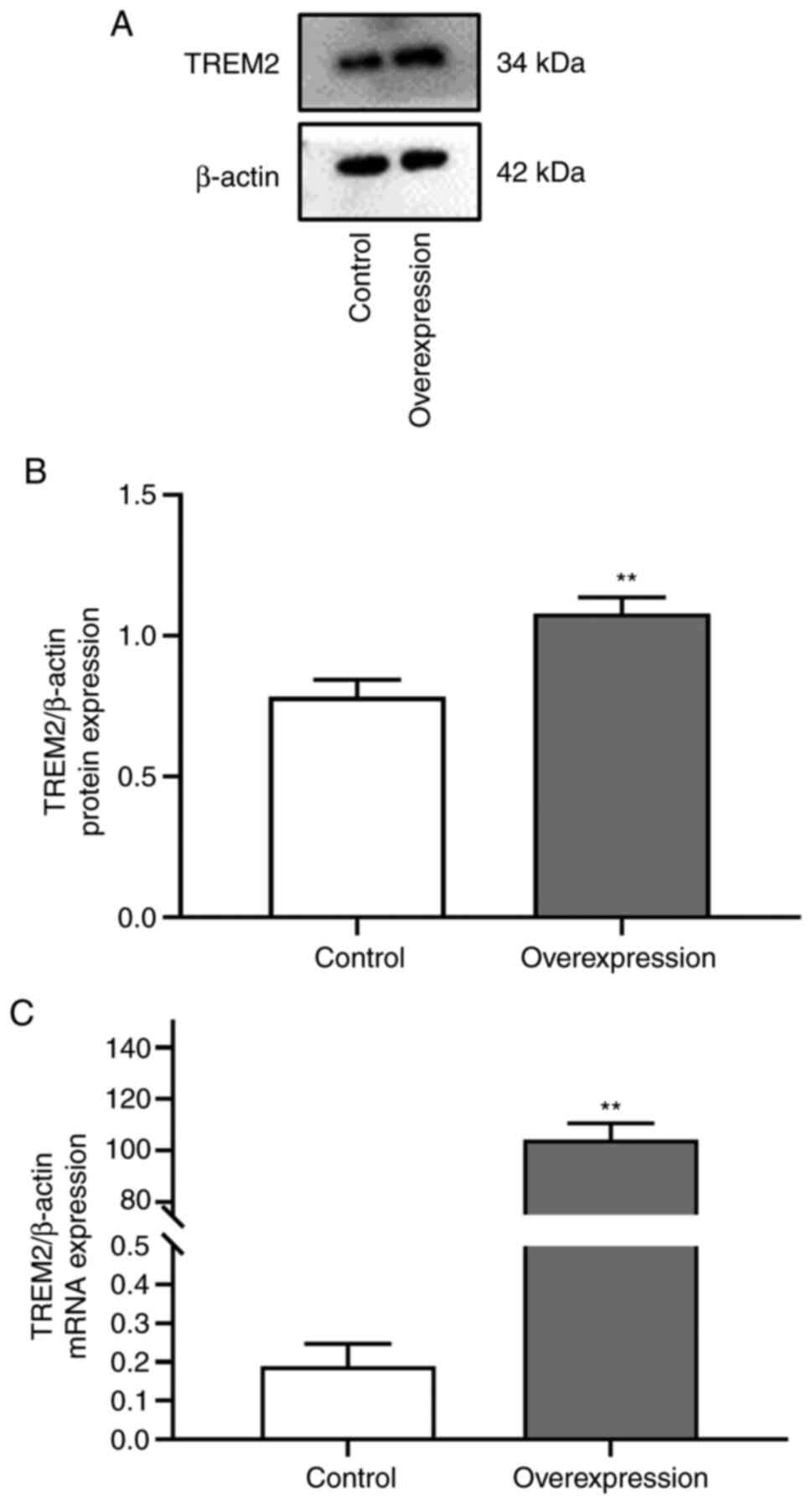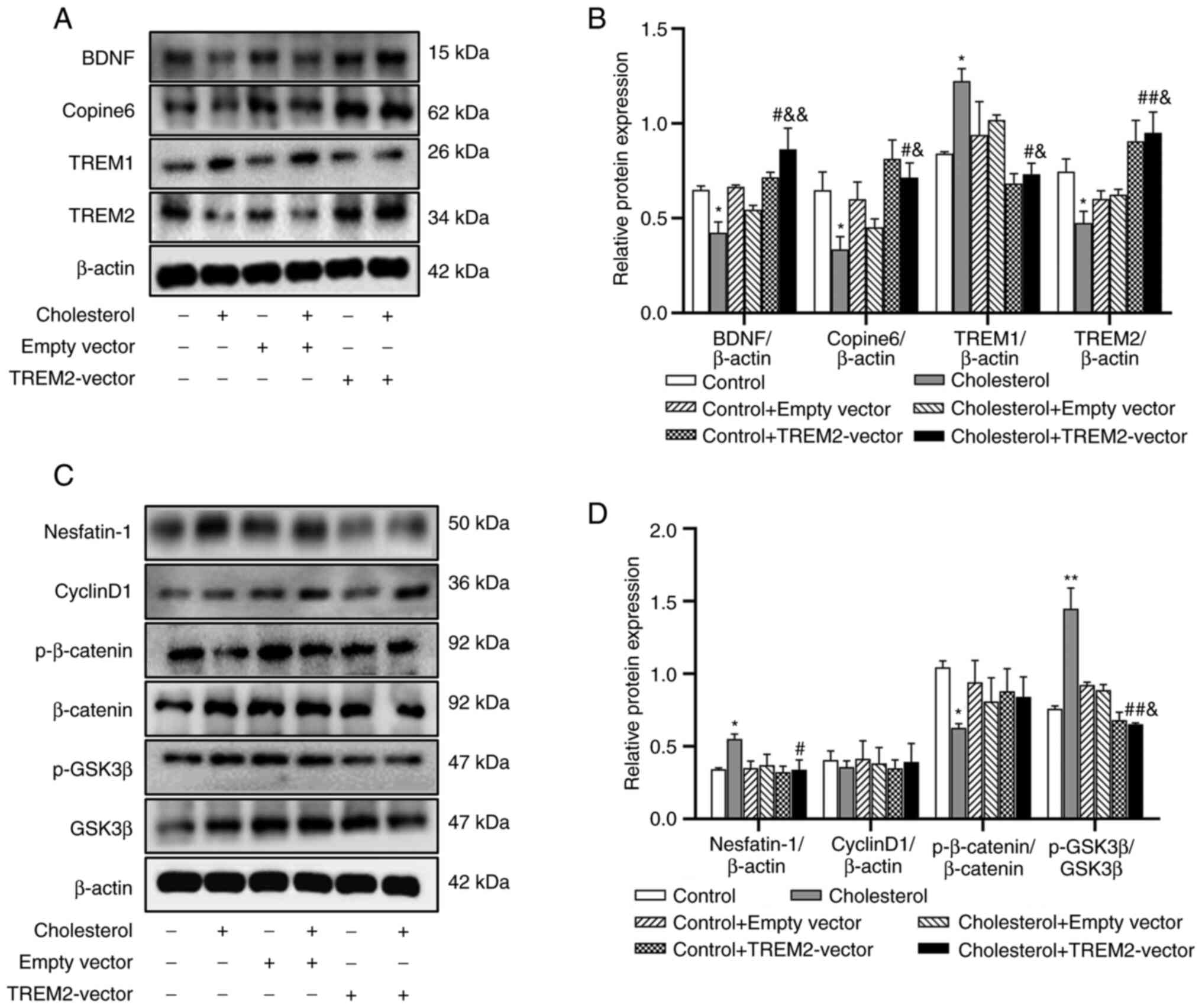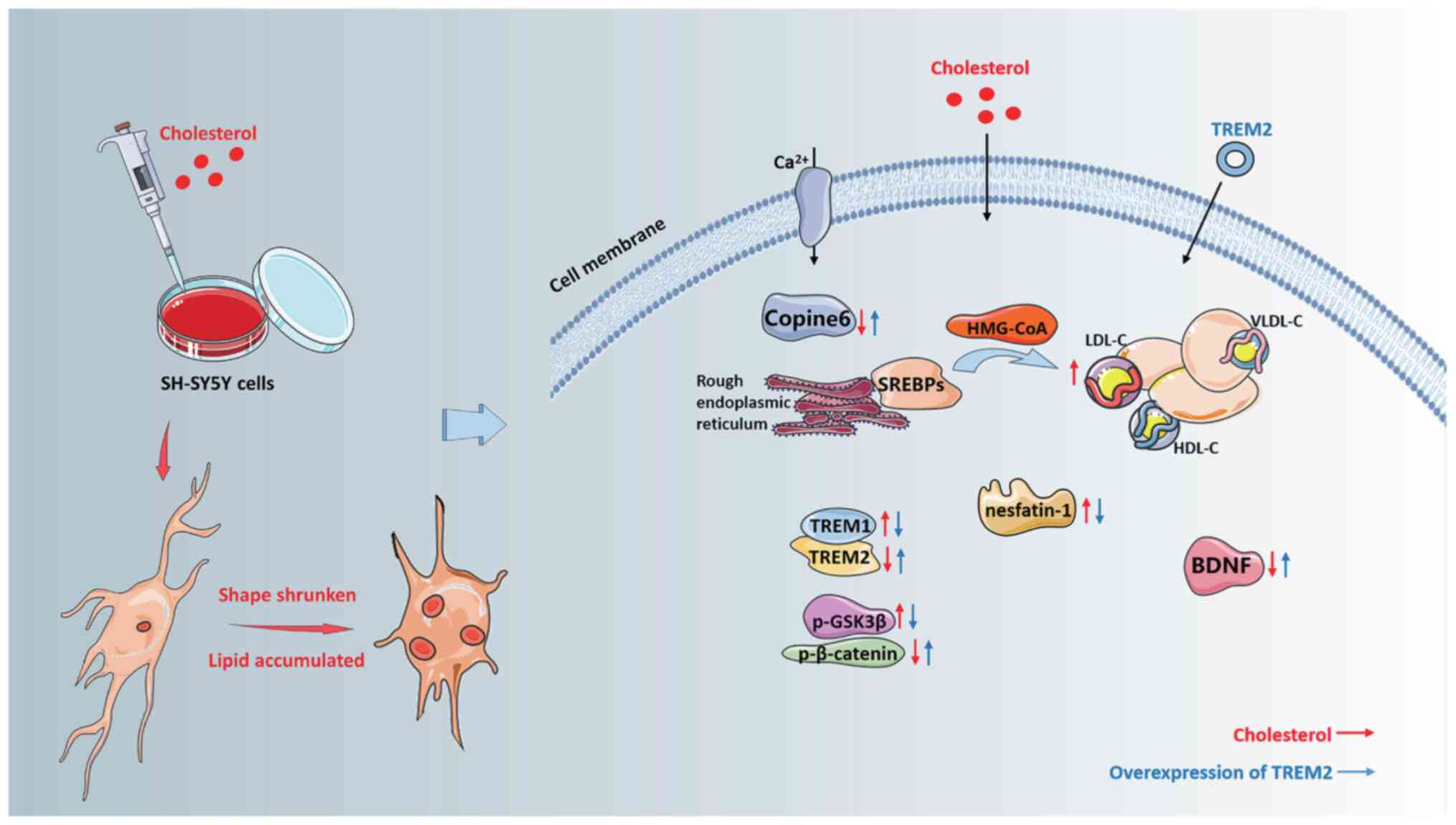|
1
|
Sun L, Clarke R, Bennett D, Guo Y, Walters
RG, Hill M, Parish S, Millwood IY, Bian Z, Chen Y, et al: Causal
associations of blood lipids with risk of ischemic stroke and
intracerebral hemorrhage in Chinese adults. Nat Med. 25:569–574.
2019.PubMed/NCBI View Article : Google Scholar
|
|
2
|
Yusuf S, Bosch J, Dagenais G, Zhu J,
Xavier D, Liu L, Pais P, Lopez-Jaramillo P, Leiter LA, Dans A, et
al: Cholesterol lowering in intermediate-risk persons without
cardiovascular disease. N Engl J Med. 374:2021–2031.
2016.PubMed/NCBI View Article : Google Scholar
|
|
3
|
Alenghat FJ and Davis AM: Management of
blood cholesterol. JAMA. 321:800–801. 2019.PubMed/NCBI View Article : Google Scholar
|
|
4
|
Grundy SM, Stone NJ, Bailey AL, Beam C,
Birtcher KK, Blumenthal RS, Braun LT, de Ferranti S,
Faiella-Tommasino J, Forman DE, et al: 2018
AHA/ACC/AACVPR/AAPA/ABC/ACPM/ADA/AGS/APhA/ASPC/NLA/PCNA Guideline
on the Management of Blood Cholesterol: A Report of the American
College of Cardiology/American Heart Association Task Force on
Clinical Practice Guidelines. Circulation. 139:e1082–e1143.
2019.PubMed/NCBI View Article : Google Scholar
|
|
5
|
Wilson PWF, Polonsky TS, Miedema MD, Khera
A, Kosinski AS and Kuvin JT: Systematic Review for the 2018
AHA/ACC/AACVPR/AAPA/ABC/ACPM/ADA/AGS/APhA/ASPC/NLA/PCNA Guideline
on the Management of Blood Cholesterol: A Report of the American
College of Cardiology/American Heart Association Task Force on
Clinical Practice Guidelines. Circulation. 139:e1144–e1161.
2019.PubMed/NCBI View Article : Google Scholar
|
|
6
|
Holt RI, Phillips DI, Jameson KA, Cooper
C, Dennison EM and Peveler RC: Hertfordshire Cohort Study Group.
The relationship between depression, anxiety and cardiovascular
disease: Findings from the Hertfordshire Cohort Study. J Affect
Disord. 150:84–90. 2013.PubMed/NCBI View Article : Google Scholar
|
|
7
|
Stough C, Pipingas A, Camfield D, Nolidin
K, Savage K, Deleuil S and Scholey A: Increases in total
cholesterol and low density lipoprotein associated with decreased
cognitive performance in healthy elderly adults. Metab Brain Dis.
34:477–484. 2019.PubMed/NCBI View Article : Google Scholar
|
|
8
|
Song Y, Liu J, Zhao K, Gao L and Zhao J:
Cholesterol-induced toxicity: An integrated view of the role of
cholesterol in multiple diseases. Cell Metab. 33:1911–1925.
2021.PubMed/NCBI View Article : Google Scholar
|
|
9
|
Zhu X, Tang HD, Dong WY, Kang F, Liu A,
Mao Y, Xie W, Zhang X, Cao P, Zhou W, et al: Distinct
thalamocortical circuits underlie allodynia induced by tissue
injury and by depression-like states. Nat Neurosci. 24:542–553.
2021.PubMed/NCBI View Article : Google Scholar
|
|
10
|
Zou Y, Zhu Q, Deng Y, Duan J, Pan L, Tu Q,
Dai R, Zhang X, Chu LW and Lu Y: Vascular risk factors and mild
cognitive impairment in the elderly population in Southwest China.
Am J Alzheimers Dis Other Demen. 29:242–247. 2014.PubMed/NCBI View Article : Google Scholar
|
|
11
|
Reed B, Villeneuve S, Mack W, DeCarli C,
Chui HC and Jagust W: Associations between serum cholesterol levels
and cerebral amyloidosis. JAMA Neurol. 71:195–200. 2014.PubMed/NCBI View Article : Google Scholar
|
|
12
|
Liu AH, Chu M and Wang YP: Up-Regulation
of Trem2 inhibits hippocampal neuronal apoptosis and alleviates
oxidative stress in epilepsy via the PI3K/Akt pathway in mice.
Neurosci Bull. 35:471–485. 2019.PubMed/NCBI View Article : Google Scholar
|
|
13
|
Roca-Agujetas V, de Dios C, Abadin X and
Colell A: Upregulation of brain cholesterol levels inhibits
mitophagy in Alzheimer disease. Autophagy. 17:1555–1557.
2021.PubMed/NCBI View Article : Google Scholar
|
|
14
|
Gao XR, Chen Z, Fang K, Xu JX and Ge JF:
Protective effect of quercetin against the metabolic dysfunction of
glucose and lipids and its associated learning and memory
impairments in NAFLD rats. Lipids Health Dis.
20(164)2021.PubMed/NCBI View Article : Google Scholar
|
|
15
|
Leritz EC, McGlinchey RE, Salat DH and
Milberg WP: Elevated levels of serum cholesterol are associated
with better performance on tasks of episodic memory. Metab Brain
Dis. 31:465–473. 2016.PubMed/NCBI View Article : Google Scholar
|
|
16
|
Zhou F, Deng W, Ding D, Zhao Q, Liang X,
Wang F, Luo J, Zheng L, Guo Q and Hong Z: High Low-density
lipoprotein cholesterol inversely relates to dementia in
community-dwelling older adults: The shanghai aging study. Front
Neurol. 9(952)2018.PubMed/NCBI View Article : Google Scholar
|
|
17
|
Banach M, Rizzo M, Nikolic D, Howard G,
Howard V and Mikhailidis D: Intensive LDL-cholesterol lowering
therapy and neurocognitive function. Pharmacol Ther. 170:181–191.
2017.PubMed/NCBI View Article : Google Scholar
|
|
18
|
Bertolio R, Napoletano F, Mano M,
Maurer-Stroh S, Fantuz M, Zannini A, Bicciato S, Sorrentino G and
Del Sal G: Sterol regulatory element binding protein 1 couples
mechanical cues and lipid metabolism. Nat Commun.
10(1326)2019.PubMed/NCBI View Article : Google Scholar
|
|
19
|
Oh IS, Shimizu H, Satoh T, Okada S, Adachi
S, Inoue K, Eguchi H, Yamamoto M, Imaki T, Hashimoto K, et al:
Identification of nesfatin-1 as a satiety molecule in the
hypothalamus. Nature. 443:709–712. 2006.PubMed/NCBI View Article : Google Scholar
|
|
20
|
Zhang Z, Li L, Yang M, Liu H, Boden G and
Yang G: Increased plasma levels of nesfatin-1 in patients with
newly diagnosed type 2 diabetes mellitus. Exp Clin Endocrinol
Diabetes. 120:91–95. 2012.PubMed/NCBI View Article : Google Scholar
|
|
21
|
Catak Z, Aydin S, Sahin I, Kuloglu T,
Aksoy A and Dagli AF: Regulatory neuropeptides (ghrelin, obestatin
and nesfatin-1) levels in serum and reproductive tissues of female
and male rats with fructose-induced metabolic syndrome.
Neuropeptides. 48:167–177. 2014.PubMed/NCBI View Article : Google Scholar
|
|
22
|
Prinz P and Stengel A: Nesfatin-1: Current
status as a peripheral hormone and future prospects. Curr Opin
Pharmacol. 31:19–24. 2016.PubMed/NCBI View Article : Google Scholar
|
|
23
|
Yin Y, Li Z, Gao L, Li Y, Zhao J and Zhang
W: AMPK-dependent modulation of hepatic lipid metabolism by
nesfatin-1. Mol Cell Endocrinol. 417:20–26. 2015.PubMed/NCBI View Article : Google Scholar
|
|
24
|
Stengel A, Goebel M, Wang L, Rivier J,
Kobelt P, Mönnikes H, Lambrecht NW and Taché Y: Central nesfatin-1
reduces dark-phase food intake and gastric emptying in rats:
Differential role of corticotropin-releasing factor2 receptor.
Endocrinology. 150:4911–4919. 2009.PubMed/NCBI View Article : Google Scholar
|
|
25
|
Yoshida N, Maejima Y, Sedbazar U, Ando A,
Kurita H, Damdindorj B, Takano E, Gantulga D, Iwasaki Y, Kurashina
T, et al: Stressor-responsive central nesfatin-1 activates
corticotropin-releasing hormone, noradrenaline and serotonin
neurons and evokes hypothalamic-pituitary-adrenal axis. Aging
(Albany NY). 2:775–784. 2010.PubMed/NCBI View Article : Google Scholar
|
|
26
|
Han YX, Tao C, Gao XR, Wang LL, Jiang FH,
Wang C, Fang K, Chen XX, Chen Z and Ge JF: BDNF-related imbalance
of copine 6 and synaptic plasticity markers couples with
depression-like behavior and immune activation in CUMS rats. Front
Neurosci. 12(731)2018.PubMed/NCBI View Article : Google Scholar
|
|
27
|
Xu YY, Ge JF, Qin G, Peng YN, Zhang CF,
Liu XR, Liang LC, Wang ZZ, Chen FH and Li J: Acute, but not
chronic, stress increased the plasma concentration and hypothalamic
mRNA expression of NUCB2/nesfatin-1 in rats. Neuropeptides.
54:47–53. 2015.PubMed/NCBI View Article : Google Scholar
|
|
28
|
Ge JF, Xu YY, Qin G, Pan XY, Cheng JQ and
Chen FH: Nesfatin-1, a potent anorexic agent, decreases exploration
and induces anxiety-like behavior in rats without altering learning
or memory. Brain Res. 1629:171–181. 2015.PubMed/NCBI View Article : Google Scholar
|
|
29
|
Ge JF, Xu YY, Qin G, Peng YN, Zhang CF,
Liu XR, Liang LC, Wang ZZ and Chen FH: Depression-like behavior
induced by nesfatin-1 in rats: Involvement of increased immune
activation and imbalance of synaptic vesicle proteins. Front
Neurosci. 9(429)2015.PubMed/NCBI View Article : Google Scholar
|
|
30
|
Liu J, Xiao Q, Xiao J, Niu C, Li Y, Zhang
X, Zhou Z, Shu G and Yin G: Wnt/β-catenin signalling: function,
biological mechanisms, and therapeutic opportunities. Signal
Transduct Target Ther. 7(3)2022.PubMed/NCBI View Article : Google Scholar
|
|
31
|
Schlupf J and Steinbeisser H: IGF
antagonizes the Wnt/β-Catenin pathway and promotes differentiation
of extra-embryonic endoderm. Differentiation. 87:209–219.
2014.PubMed/NCBI View Article : Google Scholar
|
|
32
|
Xu X, Wang L, Liu B, Xie W and Chen YG:
Activin/Smad2 and Wnt/β-catenin up-regulate HAS2 and ALDH3A2 to
facilitate mesendoderm differentiation of human embryonic stem
cells. J Biol Chem. 293:18444–18453. 2018.PubMed/NCBI View Article : Google Scholar
|
|
33
|
Logan CY and Nusse R: The Wnt signaling
pathway in development and disease. Annu Rev Cell Dev Biol.
20:781–810. 2004.PubMed/NCBI View Article : Google Scholar
|
|
34
|
Yi H, Hu J, Qian J and Hackam AS:
Expression of brain-derived neurotrophic factor is regulated by the
Wnt signaling pathway. Neuroreport. 23:189–194. 2012.PubMed/NCBI View Article : Google Scholar
|
|
35
|
Chen J, Park CS and Tang SJ:
Activity-dependent synaptic Wnt release regulates hippocampal long
term potentiation. J Biol Chem. 281:11910–11916. 2006.PubMed/NCBI View Article : Google Scholar
|
|
36
|
Spagnuolo MS, Donizetti A, Iannotta L,
Aliperti V, Cupidi C, Bruni AC and Cigliano L: Brain-derived
neurotrophic factor modulates cholesterol homeostasis and
Apolipoprotein E synthesis in human cell models of astrocytes and
neurons. J Cell Physiol. 233:6925–6943. 2018.PubMed/NCBI View Article : Google Scholar
|
|
37
|
Ge JF, Xu YY, Qin G, Cheng JQ and Chen FH:
Resveratrol ameliorates the anxiety- and depression-like behavior
of subclinical hypothyroidism rat: Possible Involvement of the HPT
Axis, HPA Axis, and Wnt/beta-Catenin pathway. Front Endocrinol
(Lausanne). 7(44)2016.PubMed/NCBI View Article : Google Scholar
|
|
38
|
Ford JW and McVicar DW: TREM and TREM-like
receptors in inflammation and disease. Curr Opin Immunol. 21:38–46.
2009.PubMed/NCBI View Article : Google Scholar
|
|
39
|
Ulland TK and Colonna M: TREM2-a key
player in microglial biology and Alzheimer disease. Nat Rev Neurol.
14:667–675. 2018.PubMed/NCBI View Article : Google Scholar
|
|
40
|
Zheng H, Jia L, Liu CC, Rong Z, Zhong L,
Yang L, Chen XF, Fryer JD, Wang X, Zhang YW, et al: TREM2 Promotes
Microglial Survival by Activating Wnt/β-Catenin Pathway. J
Neurosci. 37:1772–1784. 2017.PubMed/NCBI View Article : Google Scholar
|
|
41
|
Fan Y, Ma Y, Huang W, Cheng X, Gao N, Li G
and Tian S: Up-regulation of TREM2 accelerates the reduction of
amyloid deposits and promotes neuronal regeneration in the
hippocampus of amyloid beta1-42 injected mice. J Chem Neuroanat.
97:71–79. 2019.PubMed/NCBI View Article : Google Scholar
|
|
42
|
Jiang T, Tan L, Zhu XC, Zhang QQ, Cao L,
Tan MS, Gu LZ, Wang HF, Ding ZZ, Zhang YD and Yu JT: Upregulation
of TREM2 ameliorates neuropathology and rescues spatial cognitive
impairment in a transgenic mouse model of Alzheimer's disease.
Neuropsychopharmacology. 39:2949–2962. 2014.PubMed/NCBI View Article : Google Scholar
|
|
43
|
Parhizkar S, Arzberger T, Brendel M,
Kleinberger G, Deussing M, Focke C, Nuscher B, Xiong M,
Ghasemigharagoz A, Katzmarski N, et al: Loss of TREM2 function
increases amyloid seeding but reduces plaque-associated ApoE. Nat
Neurosci. 22:191–204. 2019.PubMed/NCBI View Article : Google Scholar
|
|
44
|
Jiang T, Tan L, Zhu XC, Zhou JS, Cao L,
Tan MS, Wang HF, Chen Q, Zhang YD and Yu JT: Silencing of TREM2
exacerbates tau pathology, neurodegenerative changes, and spatial
learning deficits in P301S tau transgenic mice. Neurobiol Aging.
36:3176–3186. 2015.PubMed/NCBI View Article : Google Scholar
|
|
45
|
Jiang T, Wan Y, Zhang YD, Zhou JS, Gao Q,
Zhu XC, Shi JQ, Lu H, Tan L and Yu JT: TREM2 Overexpression has No
Improvement on Neuropathology and Cognitive Impairment in Aging
APPswe/PS1dE9 Mice. Mol Neurobiol. 54:855–865. 2017.PubMed/NCBI View Article : Google Scholar
|
|
46
|
Chen Z, Xu YY, Wu R, Han YX, Yu Y, Ge JF
and Chen FH: Impaired learning and memory in rats induced by a
high-fat diet: Involvement with the imbalance of nesfatin-1
abundance and copine 6 expression. J Neuroendocrinol.
(29)2017.PubMed/NCBI View Article : Google Scholar : doi:
10.1111/jne.12462.
|
|
47
|
Arenas F, Garcia-Ruiz C and
Fernandez-Checa JC: Intracellular cholesterol trafficking and
impact in neurodegeneration. Front Mol Neurosci.
10(382)2017.PubMed/NCBI View Article : Google Scholar
|
|
48
|
Dietschy JM and Turley SD: Thematic review
series: Brain Lipids. Cholesterol metabolism in the central nervous
system during early development and in the mature animal. J Lipid
Res. 45:1375–1397. 2004.PubMed/NCBI View Article : Google Scholar
|
|
49
|
Schilling S, Tzourio C, Soumare A,
Kaffashian S, Dartigues JF, Ancelin ML, Samieri C, Dufouil C and
Debette S: Differential associations of plasma lipids with incident
dementia and dementia subtypes in the 3C Study: A longitudinal,
population-based prospective cohort study. PLoS Med.
14(e1002265)2017.PubMed/NCBI View Article : Google Scholar
|
|
50
|
Chen H, Du Y, Liu S, Ge B, Ji Y and Huang
G: Association between serum cholesterol levels and Alzheimer's
disease in China: A case-control study. Int J Food Sci Nutr.
70:405–411. 2019.PubMed/NCBI View Article : Google Scholar
|
|
51
|
Knowles TP, Vendruscolo M and Dobson CM:
The amyloid state and its association with protein misfolding
diseases. Nat Rev Mol Cell Biol. 15:384–396. 2014.PubMed/NCBI View Article : Google Scholar
|
|
52
|
Habchi J, Chia S, Galvagnion C, Michaels
TCT, Bellaiche MMJ, Ruggeri FS, Sanguanini M, Idini I, Kumita JR,
Sparr E, et al: Cholesterol catalyses Abeta42 aggregation through a
heterogeneous nucleation pathway in the presence of lipid
membranes. Nat Chem. 10:673–683. 2018.PubMed/NCBI View Article : Google Scholar
|
|
53
|
Di Scala C, Chahinian H, Yahi N, Garmy N
and Fantini J: Interaction of Alzheimer's β-amyloid peptides with
cholesterol: Mechanistic insights into amyloid pore formation.
Biochemistry. 53:4489–4502. 2014.PubMed/NCBI View Article : Google Scholar
|
|
54
|
Huang YN, Lin CI, Liao H, Liu CY, Chen YH,
Chiu WC and Lin SH: Cholesterol overload induces apoptosis in
SH-SY5Y human neuroblastoma cells through the up regulation of
flotillin-2 in the lipid raft and the activation of BDNF/Trkb
signaling. Neuroscience. 328:201–209. 2016.PubMed/NCBI View Article : Google Scholar
|
|
55
|
Reinhard JR, Kriz A, Galic M, Angliker N,
Rajalu M, Vogt KE and Ruegg MA: The calcium sensor Copine-6
regulates spine structural plasticity and learning and memory. Nat
Commun. 7(11613)2016.PubMed/NCBI View Article : Google Scholar
|
|
56
|
Burk K, Ramachandran B, Ahmed S,
Hurtado-Zavala JI, Awasthi A, Benito E, Faram R, Ahmad H,
Swaminathan A, McIlhinney J, et al: Regulation of Dendritic Spine
Morphology in Hippocampal Neurons by Copine-6. Cereb Cortex.
28:1087–1104. 2018.PubMed/NCBI View Article : Google Scholar
|
|
57
|
Zhang W, Shi Y, Peng Y, Zhong L, Zhu S,
Zhang W and Tang SJ: Neuron activity-induced Wnt signaling
up-regulates expression of brain-derived neurotrophic factor in the
pain neural circuit. J Biol Chem. 293:15641–15651. 2018.PubMed/NCBI View Article : Google Scholar
|
|
58
|
Motamedi S, Karimi I and Jafari F: The
interrelationship of metabolic syndrome and neurodegenerative
diseases with focus on brain-derived neurotrophic factor (BDNF):
Kill two birds with one stone. Metab Brain Dis. 32:651–665.
2017.PubMed/NCBI View Article : Google Scholar
|
|
59
|
Sharma D, Barhwal KK, Biswal SN,
Srivastava AK, Bhardwaj P, Kumar A, Chaurasia OP and Hota SK:
Hypoxia-mediated alteration in cholesterol oxidation and raft
dynamics regulates BDNF signalling and neurodegeneration in
hippocampus. J Neurochem. 148:238–251. 2019.PubMed/NCBI View Article : Google Scholar
|
|
60
|
Sayed FA, Telpoukhovskaia M, Kodama L, Li
Y, Zhou Y, Le D, Hauduc A, Ludwig C, Gao F, Clelland C, et al:
Differential effects of partial and complete loss of TREM2 on
microglial injury response and tauopathy. Proc Natl Acad Sci USA.
115:10172–10177. 2018.PubMed/NCBI View Article : Google Scholar
|
|
61
|
Sheng R, Kim H, Lee H, Xin Y, Chen Y, Tian
W, Cui Y, Choi JC, Doh J, Han JK and Cho W: Cholesterol selectively
activates canonical Wnt signalling over non-canonical Wnt
signalling. Nat Commun. 5(4393)2014.PubMed/NCBI View Article : Google Scholar
|
|
62
|
Damisah EC, Hill RA, Rai A, Chen F,
Rothlin CV, Ghosh S and Grutzendler J: Astrocytes and microglia
play orchestrated roles and respect phagocytic territories during
neuronal corpse removal in vivo. Sci Adv.
6(eaba3239)2020.PubMed/NCBI View Article : Google Scholar
|
|
63
|
Wang S, Mustafa M, Yuede CM, Salazar SV,
Kong P, Long H, Ward M, Siddiqui O, Paul R, Gilfillan S, et al:
Anti-human TREM2 induces microglia proliferation and reduces
pathology in an Alzheimer's disease model. J Exp Med.
217(e20200785)2020.PubMed/NCBI View Article : Google Scholar
|
|
64
|
Zhou Y, Song WM, Andhey PS, Swain A, Levy
T, Miller KR, Poliani PL, Cominelli M, Grover S, Gilfillan S, et
al: Human and mouse single-nucleus transcriptomics reveal
TREM2-dependent and TREM2-independent cellular responses in
Alzheimer's disease. Nat Med. 26:131–142. 2020.PubMed/NCBI View Article : Google Scholar
|
|
65
|
Diaz-Lucena D, Kruse N, Thüne K, Schmitz
M, Villar-Piqué A, da Cunha JEG, Hermann P, López-Pérez Ó,
Andrés-Benito P, Ladogana A, et al: TREM2 expression in the brain
and biological fluids in prion diseases. Acta Neuropathol.
141:841–859. 2021.PubMed/NCBI View Article : Google Scholar
|
|
66
|
Nugent AA, Lin K, van Lengerich B,
Lianoglou S, Przybyla L, Davis SS, Llapashtica C, Wang J, Kim DJ,
Xia D, et al: TREM2 regulates microglial cholesterol metabolism
upon chronic phagocytic challenge. Neuron. 105:837–854.e839.
2020.PubMed/NCBI View Article : Google Scholar
|
|
67
|
Jaitin DA, Adlung L, Thaiss CA, Weiner A,
Li B, Descamps H, Lundgren P, Bleriot C, Liu Z, Deczkowska A, et
al: Lipid-Associated macrophages control metabolic homeostasis in a
Trem2-Dependent manner. Cell. 178:686–698.e14. 2019.PubMed/NCBI View Article : Google Scholar
|















